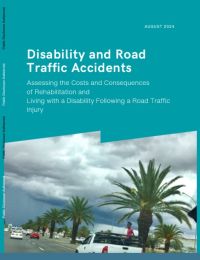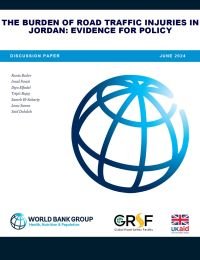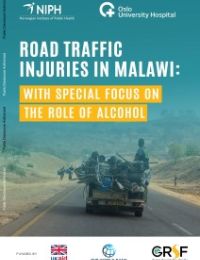Publications
1-3 of 3
-
-
-
Post-Crash Health Care
Road Traffic Injuries in Malawi: With Special Focus on the Role of Alcohol
June 2021
-
Of 1347 eligible patients who were asked to participate during a period of about three months, 1259 (93.5 percent) gave informed consent, eight patients were not tested for alcohol and thus excluded, resulting in 1251 patients in the study.
-
The prevalence of alcohol was 30.7 percent among males and only 2.5 percent among females, who represented 19.2% of the total cases. There were minor differences across different age groups, with the highest prevalence of alcohol use among those between 25 and 44 years of age (26-27 percent) and lowest among those 45 years of age and older (19.7 percent).
-
The highest prevalence of alcohol was found among patients with no formal education (33.3 percent) compared to patients with college or university education (22.1 percent) with the lowest prevalence.
-
When comparing the different road users, the highest prevalence of alcohol was found among pedestrians (41.8 percent) while the prevalence among the other road users varied from 19.1 percent (bicycle riders) to 24 percent (motorcycle riders).
-
Patients injured during weekend night crashes, showed the highest prevalence of alcohol (59.6 percent), followed by those injured during weekend evenings (36.8 percent) and weekday nights (35.3 percent).
-
Regarding drinking habits, measured by the AUDIT-C questionnaire, hazardous drinking was more common among males (26 percent) than among females (4.2 percent). Age group 25-34 years had the highest prevalence of positive AUDIT-C test (26 percent).
-
The blood alcohol concentrations (BACs) at the time of injury were estimated by back-calculation for road users who were tested for alcohol within five hours after injury in accordance with forensic medicine practices. An estimated proportion of 15.2% of the injured motor vehicle drivers had BAC at or above 0.08g/dl when the crash occurred.
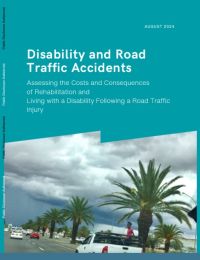
This GRSF-funded study explores the medical, economic, and social costs of road traffic accidents (RTAs), particularly focusing on individuals with permanent disabilities. According to the World Health Organization (WHO), RTAs are a global public health crisis, ranked as the 12th leading cause of death and the primary cause of mortality among children and young adults. While the UN's Decade of Action for Road Safety (2021–2030) aims to reduce RTA deaths, the study argues that more focus is needed on injuries and the long-term impact on those left disabled by RTAs.
Building on GRSF’s report Beyond The Numbers: Estimating the Disability Burden of Road Traffic Injuries (Mitra et al., 2023), this project examines data from Namibia and South Africa and interviews with experts to highlight the often-overlooked challenges faced by RTA-related disability survivors. These individuals encounter unique issues—such as brain injuries, psychological trauma, and sudden financial burdens—that require specific support mechanisms beyond general disability frameworks.
Economic losses from RTAs are substantial, with WHO estimating global costs up to $1.8 trillion annually. However, existing research focuses mainly on medical costs and productivity losses, neglecting broader social impacts. Data on the prevalence of permanent disabilities varies, underscoring the need for standardized research.
The study calls for integrating disability concerns into road safety policies, emphasizing that improved enforcement in low- and middle-income countries could prevent disabilities and reduce societal costs. Ultimately, it advocates for recognizing RTA-related disabilities as a critical issue within global health, disability policy, and development agendas.
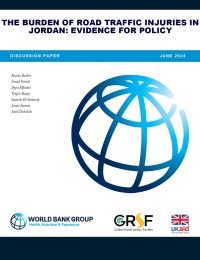
Road traffic injuries (RTIs) are a critical public health issue in Jordan, as highlighted in the 2022 Annual Report of Traffic Accidents from the Jordan Public Security Directorate. With 169,409 crashes recorded in 2022, resulting in 562 deaths and 11,510 injuries, RTIs have emerged as the leading cause of death for children and young people, and the second-leading cause for adults aged 20–64.
This analytical research study aims to understand RTI-induced disabilities in Jordan, identify contributing factors, and assess the associated costs for road traffic crash victims. Using a mixed-methods approach, the research included quantitative and qualitative data collection through hospital-based surveillance and follow-up surveys at one- and three months post-injury. The study involved six public and private hospitals across Jordan. Key informant interviews with stakeholders from various sectors were conducted to gain comprehensive insights.
The study's findings reveal that most RTI patients were male (79%) with an average age of 34 years. Crashes predominantly occurred during early mornings and night hours, involving mainly cars (72%) and motorcycles/bicycles (40%). A significant number of patients (74%) received prehospital care, primarily from ambulance staff. Most patients (66%) were fully conscious upon arrival at the emergency room.
Injury analysis showed that 58% of patients had a single injury, with extremities being the most affected area. Financially, 49% of patients incurred immediate costs upon hospital admission, and follow-up care also resulted in out-of-pocket expenses, particularly for physiotherapy and medications.
The study indicated that 79% of patients experienced some disability at the one-month follow-up, with varying degrees from mild to extreme. By the third month, 73% reported no disability, though 26% continued to experience mild impairments.
This study underscores the significant burden of RTIs and associated disabilities in Jordan, highlighting the need for targeted interventions to reduce injuries and robust long-term care to support affected individuals.
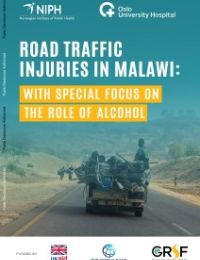
Road traffic crashes are one of the most important causes for physical and psychosocial disease burden and early death worldwide. The United Nations (UN) declared the Decade of Action for Road Safety during the period 2011-2020, with the objective to halve the number of road traffic deaths by 2020. While the number of fatal road traffic crashes has decreased since then in high-income countries (HIC), it has increased in low- and middle-income countries (LMIC). Worldwide, about 90% of the crashes are recorded in LMIC (2016), while these countries had only about 60% of the motor vehicles.
Driving under the influence of alcohol is one of the principal reasons for road traffic crashes. The use of alcohol is also a risk factor for other road users, such as pedestrians and bicyclists. The involvement of alcohol in injurious and fatal road traffic crashes has been well documented in most HICs, but data for LMICs is scarce, particularly for African countries.
The study is a collaborative effort among the Kamuzu Central Hospital (KCH), the Norwegian Institute of Public Health (NIPH) and the Oslo University Hospital (OUH), with the financial support of UK Aid through the Global Road Safety Facility (GRSF), the International Council on Alcohol Drugs and Traffic Safety (ICADTS) and the Norwegian Council for Road Safety (Trygg Trafikk).
The objective of the study was to generate new knowledge about road traffic injuries in Malawi and the extent of traffic accidents related to alcohol use, to increase capacity to conduct alcohol-testing, and develop a database for the findings, which in turn will form the basis for future policymaking to reduce traffic accidents.
The objectives were achieved through collecting data on patients who sought treatment after road traffic crashes and admitted to the Emergency Department at Kamuzu Central Hospital in Lilongwe, Malawi. The data included basic information about the patients, alcohol use before the injury, and information about accident circumstances, including types of road users and vehicles involved. Knowledge and training of local KCH employees to perform alcohol testing and record data were an important aspect of this study.
RESULTS ⌵︎
Acknowledgments ⌵︎
This research project was made possible with the financial support of UK Aid through the Global Road Safety Facility, the International Council on Alcohol Drugs and Traffic Safety and the Norwegian Council for Road Safety.

